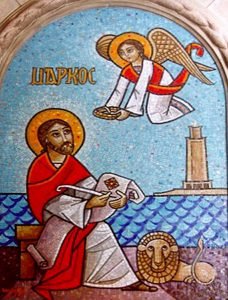 In the last issue of this article I began sharing thoughts about the Gospel of Mark. I shared that it was written in Greek and raised the question why it was written in that language.
In the last issue of this article I began sharing thoughts about the Gospel of Mark. I shared that it was written in Greek and raised the question why it was written in that language.
The most probably reason is that from the time that Alexander of Greece conquered the Mesopotamian world, three centuries before the time of Jesus, Greek was the language of educated people. In fact, in the time of Alexander, the Jews translated their Bible into Greek. They called it the Septuagint (meaning seventy) because they developed a legend that seventy scribes had been asked to do the translation in isolated cells and all came up with identical words, thus proving the inspiration of God. Educated Jews knew the Bible in Greek as well as in Hebrew and Aramaic. There is good evidence that when the evangelists quote or refer to the Jewish bible, they are following the Septuagint.
Mark’s Gospel is not written in fluent Greek, however. Indeed, it contains numerous “Semitisms,” that is, phrases that are awkward in Greek but would read well if translated into Hebrew or Aramaic. The overall impression it leaves, therefore, is that of an author who thought in one language and was trying to write in another. In addition, Mark’s Gospel is the only one that uses Aramaic phrases at key moments of the narrative: Talitha koum, meaning “Little girl, rise up!” (Mark 5:41); Ephphatha, meaning “Be released” or “be opened (Mark 7:34) ; Abba, meaning “Father” (Mark 14:36); and Eloi, Eloi, meaning “My God, my God” (Mark 15:34)
The date of Mark’s Gospel is also a matter of speculation. Most, although not all, scholars believe that Mark’s was the earliest of the Gospels, written around 70 CE and followed in the eighties by Matthew and Luke, and in the nineties by John.
The year 70 was very significant for all Jews, including the Jewish followers of Jesus, because it was the year that the Romans destroyed the Temple in Jerusalem. The destruction was the traumatic end to the four-year revolt of the Jews against Rome. The Temple had been destroyed once before by Babylon, six centuries earlier, and the effect had been devastating. The Roman destruction was also a watershed in Jewish history.
After that destruction the Temple was never rebuilt. The leaders of the revolt (Zealots), along with the temple leaders (priests and Sadducees), disappeared or scattered.
